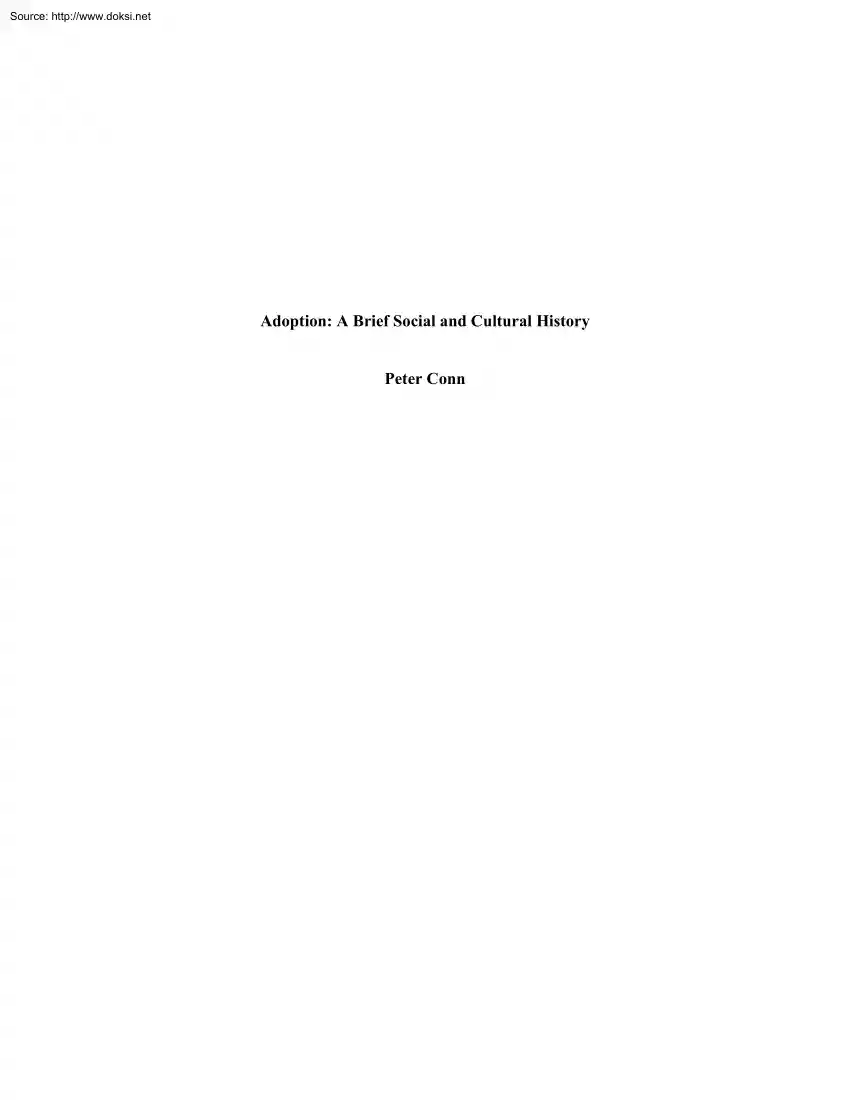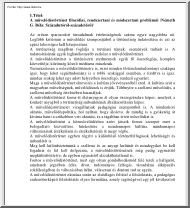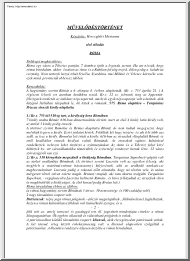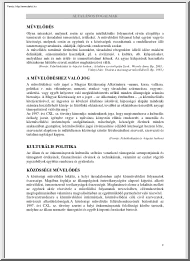Datasheet
Year, pagecount:2014, 6 page(s)
Language:English
Downloads:2
Uploaded:November 27, 2017
Size:535 KB
Institution:
-
Comments:
Attachment:-
Download in PDF:Please log in!
Comments
No comments yet. You can be the first!Most popular documents in this category
Content extract
Source: http://www.doksinet Adoption: A Brief Social and Cultural History Peter Conn Source: http://www.doksinet This is Jennifer’s book. 2 Source: http://www.doksinet Contents Prologue: What Is Adoption? One: Doing What Comes Naturally Two: Adoptions Long and Often Surprising History Three: Adoption in America Four: Culture, Nationalism, and Intercountry Adoption Five: Imagining Adoption 3 Source: http://www.doksinet Prologue: What Is Adoption? I don’t recall when it started, but I first noticed it about thirty years ago, when Jennifer was nine years old. Jennifer, whom you will meet from time to time in the pages that follow, is our adopted Korean daughter. One sunny summer afternoon, the six of us – Jennifer and her three older non-adoptive siblings and my wife Terry and I – had taken a trip to the Philadelphia Zoo (America’s oldest zoo, by the way). Several of the enclosures featured newly installed signs inviting visitors to “adopt an animal.” I cannot
remember just which animals were available for adoption, but I’d guess that polar bears and monkeys and lions would have been likely candidates. I had never seen such an appeal before. “Adopt an animal,” said Jennifer in a hushed and puzzled voice, reading aloud from one of the signs. She read it several times, then turned to her three siblings for information and advice. Terry and I watched, unsure whether to be amused or angry or just confused Being parents has usually confused us, so we chose confusion as our initial response. “Adopt an animal,” she said again. Does this mean, Jennifer wanted to know, that we could take an animal home with us? Would it become part of our family? Where would it sleep? Who would take care of it while all of us were away each day at school or work? Good questions, we all gravely agreed. She also worried that this adoption seemed rather – what’s the right word here? – casual. We had all of us, Jennifer as much or more than the rest, paid
a stiff price in time and anxiety and love over many years to build the adoptive family we had. Apparently, “adopting” the animals in the zoo was simply a matter of putting a quite modest check in the mail. Adoption, in fact, meant nothing more than a fully revocable pledge to donate a few dollars to the zoo, which would be folded into the operating costs. We decided not to adopt any of the zoo’s animals, but in the years since that memorable summer occasion, opportunities to “adopt” something or other have done nothing but multiply. You can still adopt an animal: I have found more internet sites offering penguins for adoption than there are penguins in all of America’s zoos. If penguins are not your animal of choice, you could adopt a lion or a tiger or a bear. If animals don’t do it, you can adopt a classroom, or a tree, or a soldier (that one surprised me), or a section of highway, or a ship, or any one of several archaeological artifacts in the University of
Pennsylvania Museum, or a Shakespearean actor at London’s Globe Theatre. I open with this small story to illustrate one of the themes I will be examining in this book: adoption is an exceptionally elusive term. The meaning of adoption, both literally and symbolically, has varied widely over time and place. Practices called adoption have ranged from the informal and often temporary care of a child (or adult) to the legal and permanent inclusion of a child into a new family, with several stops in between. Wests Encyclopedia of American Law defines adoption as “the taking of a child into ones 4 Source: http://www.doksinet family, creating a parent to child relationship, and giving him or her all the rights and privileges of ones own child, including the right to inherit as if the child were the adopters natural child.” While this rhymes with our more or less common sense understanding, it doesn’t begin to capture the variety and complexity of the practices we will review.
Children have been adopted, legally and extra-legally, formally and informally, to constitute or re-constitute families, to provide homes when birth parents could not or would not do so, to serve as slaves, on the one hand, or to replace disinherited or deceased heirs on the other. In this book, I have set out to provide a brief but reliable survey of the history of adoption, incorporating personal experience and wide but judicious reading in both primary and secondary texts. Beyond that, I want to reveal the complex nature of adoptive kinship, and its multifarious meanings in diverse cultural contexts. In the course of the exposition, I hope that readers will come to understand that families really do come in all shapes and flavors. As Kwame Anthony Appiah has put it, describing Ghanaian family structure, and in doing so also summarizing a thesis I pursue throughout the book: "There are, in short, different ways of organizing family life."i Adoptions history, much of it
largely forgotten, deserves recovery for several reasons. To begin with, the numbers of adoptive parents and children have grown dramatically since the Second World War, both in the United States and globally. In addition, according to a 1997 survey: "six in 10 Americans have had experience with adoption, meaning that they themselves, a family member or close friend was adopted, had adopted a child or placed a child for adoption."ii And many other Americans have considered adoption Those millions of adults and children who are, willy-nilly, re-shaping the meaning of family, have an obvious and personal stake in this subject. However, adoptions history and significance offer instruction for all of us, whether touched directly by adoption or not, about an increasingly important dimension of our national experience. Beyond that, attitudes toward adoption can provide insight into larger cultural assumptions: not only about family and kinship, but also about race and ethnicity,
about the law, about human nature itself. Many of the questions that adoption raises continue to be controversial, at once symptoms and causes of deep divides in values and perception. Because adoptions implications are multifarious, our inquiry will entail excursions into social and cultural history, philosophy, sociology and anthropology, religion, law, research on animal behavior, personal experience, and the arts, especially literature. And the occasional New Yorker cartoon caption: "Is that baby adopted, or artisanal?" Finally, as I hope these chapters will demonstrate, the story of adoption is a veritable ripping yarn, filled with unexpected, exciting, sometimes downright implausible twists and turns, and a sensational cast of historical and fictional players. Moses is here, and Julius Caesar, and Tarzan, along with Oedipus and the characters of Shakespeare, Dickens, Philip Roth, Joyce Carol Oates, Chang-rae Lee, A. M Homes, Eli Wiesel, Garrison Keillor, P. D James, and
Bill Cosby We will encounter a Chinese emperor who 5 Source: http://www.doksinet adopted several hundred soldiers, apparently to invigorate their fighting spirits; an ancient Egyptian bureaucrat who adopted his wife as his daughter to secure her rights to inherit; a nineteenth-century American general who adopted the children of Indians he had slaughtered; twentieth-century white Arizona townsmen who abducted white children from their Mexican adoptive parents; and non-human primates who exhibit undeniably adoptive behavior. Among many others i Kwame Anthony Appiah, Cosmopolitanism: Ethics in a World of Strangers (New York: W. W Norton & Company, 2006), p. 49 ii "Benchmark Adoption Survey: Report on the Findings," Conducted for the Evan B. Donaldson Adoption Institute by Princeton Survey Research Associates (October, 1997). 6
remember just which animals were available for adoption, but I’d guess that polar bears and monkeys and lions would have been likely candidates. I had never seen such an appeal before. “Adopt an animal,” said Jennifer in a hushed and puzzled voice, reading aloud from one of the signs. She read it several times, then turned to her three siblings for information and advice. Terry and I watched, unsure whether to be amused or angry or just confused Being parents has usually confused us, so we chose confusion as our initial response. “Adopt an animal,” she said again. Does this mean, Jennifer wanted to know, that we could take an animal home with us? Would it become part of our family? Where would it sleep? Who would take care of it while all of us were away each day at school or work? Good questions, we all gravely agreed. She also worried that this adoption seemed rather – what’s the right word here? – casual. We had all of us, Jennifer as much or more than the rest, paid
a stiff price in time and anxiety and love over many years to build the adoptive family we had. Apparently, “adopting” the animals in the zoo was simply a matter of putting a quite modest check in the mail. Adoption, in fact, meant nothing more than a fully revocable pledge to donate a few dollars to the zoo, which would be folded into the operating costs. We decided not to adopt any of the zoo’s animals, but in the years since that memorable summer occasion, opportunities to “adopt” something or other have done nothing but multiply. You can still adopt an animal: I have found more internet sites offering penguins for adoption than there are penguins in all of America’s zoos. If penguins are not your animal of choice, you could adopt a lion or a tiger or a bear. If animals don’t do it, you can adopt a classroom, or a tree, or a soldier (that one surprised me), or a section of highway, or a ship, or any one of several archaeological artifacts in the University of
Pennsylvania Museum, or a Shakespearean actor at London’s Globe Theatre. I open with this small story to illustrate one of the themes I will be examining in this book: adoption is an exceptionally elusive term. The meaning of adoption, both literally and symbolically, has varied widely over time and place. Practices called adoption have ranged from the informal and often temporary care of a child (or adult) to the legal and permanent inclusion of a child into a new family, with several stops in between. Wests Encyclopedia of American Law defines adoption as “the taking of a child into ones 4 Source: http://www.doksinet family, creating a parent to child relationship, and giving him or her all the rights and privileges of ones own child, including the right to inherit as if the child were the adopters natural child.” While this rhymes with our more or less common sense understanding, it doesn’t begin to capture the variety and complexity of the practices we will review.
Children have been adopted, legally and extra-legally, formally and informally, to constitute or re-constitute families, to provide homes when birth parents could not or would not do so, to serve as slaves, on the one hand, or to replace disinherited or deceased heirs on the other. In this book, I have set out to provide a brief but reliable survey of the history of adoption, incorporating personal experience and wide but judicious reading in both primary and secondary texts. Beyond that, I want to reveal the complex nature of adoptive kinship, and its multifarious meanings in diverse cultural contexts. In the course of the exposition, I hope that readers will come to understand that families really do come in all shapes and flavors. As Kwame Anthony Appiah has put it, describing Ghanaian family structure, and in doing so also summarizing a thesis I pursue throughout the book: "There are, in short, different ways of organizing family life."i Adoptions history, much of it
largely forgotten, deserves recovery for several reasons. To begin with, the numbers of adoptive parents and children have grown dramatically since the Second World War, both in the United States and globally. In addition, according to a 1997 survey: "six in 10 Americans have had experience with adoption, meaning that they themselves, a family member or close friend was adopted, had adopted a child or placed a child for adoption."ii And many other Americans have considered adoption Those millions of adults and children who are, willy-nilly, re-shaping the meaning of family, have an obvious and personal stake in this subject. However, adoptions history and significance offer instruction for all of us, whether touched directly by adoption or not, about an increasingly important dimension of our national experience. Beyond that, attitudes toward adoption can provide insight into larger cultural assumptions: not only about family and kinship, but also about race and ethnicity,
about the law, about human nature itself. Many of the questions that adoption raises continue to be controversial, at once symptoms and causes of deep divides in values and perception. Because adoptions implications are multifarious, our inquiry will entail excursions into social and cultural history, philosophy, sociology and anthropology, religion, law, research on animal behavior, personal experience, and the arts, especially literature. And the occasional New Yorker cartoon caption: "Is that baby adopted, or artisanal?" Finally, as I hope these chapters will demonstrate, the story of adoption is a veritable ripping yarn, filled with unexpected, exciting, sometimes downright implausible twists and turns, and a sensational cast of historical and fictional players. Moses is here, and Julius Caesar, and Tarzan, along with Oedipus and the characters of Shakespeare, Dickens, Philip Roth, Joyce Carol Oates, Chang-rae Lee, A. M Homes, Eli Wiesel, Garrison Keillor, P. D James, and
Bill Cosby We will encounter a Chinese emperor who 5 Source: http://www.doksinet adopted several hundred soldiers, apparently to invigorate their fighting spirits; an ancient Egyptian bureaucrat who adopted his wife as his daughter to secure her rights to inherit; a nineteenth-century American general who adopted the children of Indians he had slaughtered; twentieth-century white Arizona townsmen who abducted white children from their Mexican adoptive parents; and non-human primates who exhibit undeniably adoptive behavior. Among many others i Kwame Anthony Appiah, Cosmopolitanism: Ethics in a World of Strangers (New York: W. W Norton & Company, 2006), p. 49 ii "Benchmark Adoption Survey: Report on the Findings," Conducted for the Evan B. Donaldson Adoption Institute by Princeton Survey Research Associates (October, 1997). 6





 When reading, most of us just let a story wash over us, getting lost in the world of the book rather than paying attention to the individual elements of the plot or writing. However, in English class, our teachers ask us to look at the mechanics of the writing.
When reading, most of us just let a story wash over us, getting lost in the world of the book rather than paying attention to the individual elements of the plot or writing. However, in English class, our teachers ask us to look at the mechanics of the writing.